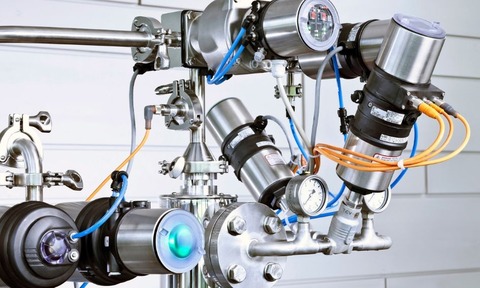How process optimisation promotes workflow
24 Jul 2019

Bürkert’s Greg Wainhouse examines how the wastewater and brewing sectors employ process optimisation to deliver improvements and reduce costs...
One of the major challenges in the water treatment sector involves sludge dewatering, which in many cases involves high speed centrifuges that separate the solid and liquid fractions. To assist this, a polymer is added to the sludge to help bind the solid particles together.
The goal is to produce a final product that has the right consistency that makes transport efficient, without moving excess water to the fields, where it is spread as agricultural soil enhancer.
The process has a number of variables, including the percentage solids of the raw sludge, the flowrate of the sludge, the amount of polymer being added and the speed of the centrifuge. Of these, the solid content of the sludge is crucial to determine the settings for the rest of the process.
Assessing the percentage of solids using a turbidity sensor located on the intake to the centrifuge will significantly increase the response time to any changes.
By constantly monitoring the inlet of the process, adjustments can be made quickly and the amount of processed sludge that falls below the required standard is minimised. Further improvements can be made by adding a flowmeter, or better still a device that provides a mass flow measurement.
This creates a pro-active system that makes adjustments based on data from the inlet (as opposed to a reactive one), reduces the amount of operator intervention and delivers a more stable output.
Making the best brew
An important part of the brewing process is adding oxygen to the wort to allow the yeast to thrive and create the alcohol and carbon dioxide. After the boiled wort has been chilled to fermentation temperature, oxygen is used to start fermentation.
If air is added, then the process can only achieve an oxygen concentration of eight parts per million (ppm). For the c10 ppm, typically used by commercial breweries for higher strength beers, pure oxygen is required.
Precision control of cleaning processes in hygienic applications can improve productivity
However, the ability of the wort to absorb oxygen is affected by its specific gravity, which is measured on the Plato gravity scale. Furthermore, each yeast strain has an optimum oxygen level and if this is not achieved precisely, the optimum fermentation rate will not be achieved.
Achieving mass for gas
Flavour contributors to beer are fermentation products such as esters, higher alcohols and sulphur compounds. The concentrations of these compounds will be altered if the growth characteristics of the yeast are less than perfect.
Achieving the optimum O2 level in the wort for each beer therefore is very important in terms of product quality, so an effective process to control the oxygen levels is essential. Using a mass flow sensor to establish the concentration of dissolved solids, and total volume, coupled with a mass flow controller to deliver the gas, is an efficient starting point.
To improve the accuracy of the system even more, the signal from a dissolved oxygen (DO) probe in the fermenter vessel can provide feedback to adjust the setpoint and obtain the exact level of dissolved oxygen required.
Greg Wainhouse is UK water segment manager at Bürkert

